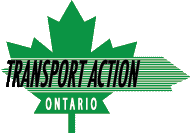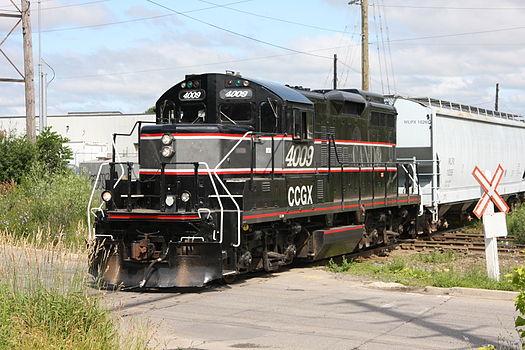
Delegation on Passenger Rail to Oxford County Council
By Transport Action Ontario | Intercity Rail and Bus , Southwestern Ontario
Transport Action Ontario secretary, Ken Westcar, delegated to Oxford County’s council meeting on April 24, 2024 in support of elements of their 2023 Transportation Master Plan that included VIA Rail service improvements through Woodstock and Ingersoll.
Ken’s peer-reviewed PowerPoint presentation on behalf of Transport Action Ontario (TAO) was submitted in advance of the delegation and it was clear from the interest and responses that county councillors and the warden had studied it thoroughly in advance of the meeting.
VIA Train 76 stop reinstatement.
The presentation emphasised the need for a letter from Oxford County Council to Mario Péloquin, VIA Rail CEO, requesting a Woodstock stop for London to Toronto VIA Train 76 to partially fill a nearly nine-hour afternoon service gap from both Woodstock and Ingersoll. There was consensus that this gap severely disincentivizes VIA usage by Oxford County residents and visitors and acted as a brake on economic and community progress and wellness due to the increasingly congested and unreliable Highways 401/403 being the default mobility option.
Given that Train 76 could be one element of the proposed Toronto-Chicago Amtrak/VIA international service, it was agreed that Woodstock must be a stop to provide passenger rail access to and from the U.S. Mid West and beyond given that it is part of the industrial heartland of the U.S.A. and Canada where investment and talent are often shared.
Additional services and provincial cost-sharing.
Beyond the Train 76 stopping issue, discussion also extended to an aspirational “Train 74” service starting in either Windsor, Sarnia or Stratford, with early afternoon stops in Woodstock and Ingersoll, that would make VIA a very competitive option for travellers to/from Oxford County. Because of delegation time constraints, westbound services were not discussed.
The delegation dialog included the possibility of provincial financial support for these additional VIA services in southwestern Ontario (SWO) like state-supported Amtrak services in the USA. TAO’s position on this is that municipalities should engage with the province based on the very advantageous cost/benefit ratio available from incremental intensification of VIA services to the region. Given the provincial withdrawal of trial GO train services between London/Kitchener/Toronto, the concept has validity as the initial $160million originally committed by the province for this service and the ongoing provincial investment in maintenance and operations would likely meet or exceed the cost of the aspirational VIA Train 74 service.
Improved Woodstock VIA station aesthetics.
Further discussion took place on Woodstock VIA station aesthetics and its potential as a more attractive portal for Oxford County to reinforce its messaging on attractiveness to inward investment, quality of life and sustainability. Concern was expressed about the faded boxcar murals on the north side of the railway tracks and the freight traffic blocking effects when VIA trains are stopped on the primary east and westbound CN tracks. Solutions to these problems are possible and require further multi-party discussion.
Recommended actions.
While requesting a Woodstock stop for Train 76 is primarily an Oxford County task, TAO strongly recommended joint action by all VIA Rail-served communities (mayors, wardens and other stakeholders) to discuss with both the federal and provincial governments on affordable and readily achievable VIA schedule improvements. The primary drivers are regional population and industrial growth, rapidly changing demographics and over-reliance on capacity-constrained Highways 401/403.
A key element of this joint approach would be a southwestern Ontario (SWO) rail summit meeting staged in conjunction with the release of the ongoing federal and provincial studies to ensure that subsequent policies and investments are truly reflective of actual needs. TAO requested Oxford County’s support in arranging this after dialog with their peers in other affected municipalities. TAO would be a facilitator.
Conclusion.
Given the discussion intensity and positivity during the delegation, it is clear that the need for improved SWO passenger rail services is well recognised and of growing urgency to properly support the region’s economic and social prosperity and the constant drive for sustainability.
Photograph: Woodstock VIA Rail station in summer 2023, with scaffolding in place for brickwork cleaning.





